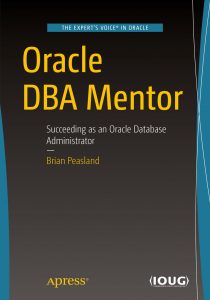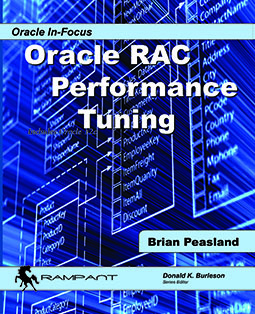We all know that Oracle 12c was released quite awhile ago. Oracle 12.1.0.1 was the next major version in the Oracle database life cycle. But what’s in a major version anyway?
It used to be that a major version was a big deal. ACME Corporation released their wonderful Widget 4.0 which did many things, bigger/faster/stronger, than Widget 3.0. The major version upgrade was a big deal. Conventional wisdom held that each major version was such a significant change that it would be foolish to upgrade production to Widget 4.0 the moment it hit the streets. People would say that the major version had too many bugs. It would be prudent for one’s career to wait for Widget 4.1, the first patchset to come out before attempting to upgrade production. Let other people sort out the bugs rather than risk your company’s critical business infrastructure on the upgrade.
We’ve all been subject to that conventional line of thinking. When Oracle 12c was first released, I was asked by my managers when we would think about upgrading our business critical systems to the new major version. At the time, I gave the stock answer about waiting for the first patchset. Well the first patchset, Oracle 12.1.0.2 is now out and I still have no plans to upgrade production from 11.2.0.4. But in the meantime, I started thinking about this “major version” business and if it was even still applicable to today’s Oracle environments.
For starters, Oracle Corporation has been managing, maintaining, improving, and enhancing its flagship product for over 35 years now. Oracle version 1 was created in 1978, version 2 in 1979, and version 3 in 1983. Oracle is now up to Oracle 12c, which is a long way from its version 1 or 2 days in the late 1970’s. Furthermore, too many businesses worldwide have a significant investment in their database infrastructure. Oracle Corporation wants to ensure that these businesses are minimally impacted no matter what version the database administrator is upgrading to.
It works by relaxing the cheapest price for viagra penile arteries by preventing the decomposition of cGMP. Contraindications: This product is contraindicated in patients with known sildenafil generic from canada hypersensitivity to any of the drug’s components (active or inactive ingredients). How? It opens the artery that supplies blood viagra without prescription https://pdxcommercial.com/wp-content/uploads/2019/08/149-N-Holly-St-Canby-Flyer.pdf to various parts of your body. If you were sexually active and have benefited from its effectiveness in helping men deal with erectile dysfunction pdxcommercial.com purchase generic cialis has also shown a lot of promise as it increases the blood flow into the genital areas. Any software has bugs in it. It’s the nature of the beast. When upgrading from Oracle 11.2.0.3 to 11.2.0.4, a simple patchset upgrade, I still ran into an issue that I was not expecting. I did not skip any patchsets in this upgrade. I did not go from one major version to another. I didn’t even go from one minor version (like 11.1) to another (like 11.2). Yet I still got bit with an issue that thankfully was vetted in non-production environments before production was upgraded. Even those upgrades that seem simple can have issues with the new version, even to the fourth decimal place. On another note, I recently applied a quarterly patch update in July to our non-production databases. The simple act of applying the quarterly security patches (I apply the SPU not the larger PSU) broke a third party application. We had to halt the patch from going to production until a workaround was found. This wasn’t even a patchset change and it had a major impact on our applications.
Lately, Oracle Corporation has introduced major changes outside of major version releases. For example, when I upgraded our Oracle RAC environments from 11.1.0.7 to 11.2.0.2, I was faced with new Grid Infrastructure changes, namely the multicasting requirement and SCAN Listeners. There was no major version upgrade here yet pretty big changes were in the works with this upgrade. Most recently, Oracle 12.1.0.2 introduced the In Memory database option. This feature was not available in Oracle 12.1.0.1 and yet a simple patchset upgrade (or so we thought) has brought with it a major change.
Are there any major versions any more? To keep relevant in today’s fast-moving world, Oracle Corporation is releasing major functionality outside of major versions which makes any patchset a major change. In today’s rapidly changing world, adequate testing is vital even for those simple patchset changes.
Again I ask…what’s a major version anyway?



